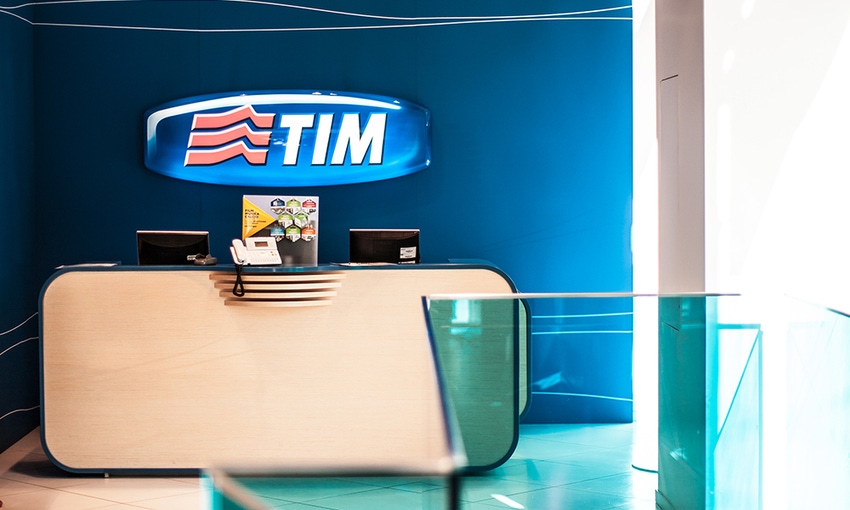The artist formerly known as Telecom Italia has reported a year-on-year revenue decline of 3.5% in 2016, collecting just over €19 billion, but don’t worry it has a cunning plan.
February 6, 2017

The artist formerly known as Telecom Italia has reported a year-on-year revenue decline of 3.5% in 2016, collecting just over €19 billion, but don’t worry it has a cunning plan.
Performances across the year were neither here nor there, as the telco failed to capitalize on its healthy position in the Italian market to take advantage of the transition to the digital economy. While it would hardly be considered blockbuster, the trends were actually quite favourable for the team, setting it in a strong position to move forward with its new plan.
Year-on-year quarterly figures got better and better throughout 2016 and despite flat performance across the period, the business is in a relatively good position. Declines reported in Q1 and Q2 (-2.3% and -1.2% respectively), however these figures were turned around in the second half with Q3 growing 1% and Q4 at 2.8% compared to the same period in 2015. These positive trends have not gone un-noticed by investors either with Telecom Italia’s share prices rising by just over 9% in the last three months.
The plan moving forward is to capitalize on three areas in particular; convergence, content and enterprise ICT services, all of which will be fuelled by ambitious ultra-broadband objectives. The new strategy will be rolled out over the course of 2017-2019, with €11 billion committed overall, €5 billion on which will be focused on ultra-broadband commitments.
By the end of 2019, the team hope to have LTE mobile network coverage which 99% of the population, and a fibre network which reaches 95%. The objective is to have 50 major towns and cities with connection speeds of up to 1GB, though the clever use of ‘up-to’ in the press release will fuel the spirits of pessimists.
In the domestic mobile market, where Telecom Italia has roughly 35% market share (according to Ovum’s market tracker), the focus here will rely on the reach of its 4G network and leveraging content as a value add for customers. Relying on the appetite of the consumer for data continuing to grow particular focus will be placed on convergence and content.
The Italian market has been relatively stagnant in terms of customer poaching and market share movement over the last couple of years, offering each of the telcos the opportunity to more securely develop value adds. In other markets, such as the UK, chasing customers and developing a deeper, value led proposition simultaneously can be an expensive business. UK telcos, for example, are having to chase new customers with cheaper deals, while also investing in expensive USPs and value adds to make the offering unique.
This is an anomaly which works in favour of the Telecom Italia strategy, which is reliant on customers maintaining the status quo, investing in network infrastructure and the development of a premium digital services and content, to sweat the value of each customer.
To facilitate this strategy of content sweating, Telecom Italia believe LTE customers will account for 90% of mobile broadband customers by 2019, with almost blanket coverage at 75 Mbps, with peaks of 500 Mbps. They are ambitious targets, but a loyal customer base will provide will provide some sense of security to be more creative.
In terms of the fixed domestic market, the team anticipate losses will be plugged by 2018, leaning on fibre optic investments to fuel the growth of IoT devices in the home and elsewhere, which can be paid for directly in a customer’s bill.
Telecom Italia has had a tough time of it in recent years, though a new management team has seemingly fired up the business and provided much needed urgency to tackle the digital economy.
Daily Poll
What will be the most significant potential roadblock for artificial intelligence?
Political issues and conflict (25%, 10 Votes)
Getting performance of the technology up to the promise (20%, 8 Votes)
Consumer acceptance of the role of AI (18%, 7 Votes)
Understanding what data is relevant and useful (13%, 5 Votes)
Regulatory uncertainty (10%, 4 Votes)
Cost of implementation (5%, 2 Votes)
Skills gap to manage AI (5%, 2 Votes)
Enterprise/telco acceptance and implementation of AI (3%, 1 Votes)
Other (3%, 1 Votes)
Total Voters: 40
About the Author(s)
You May Also Like








.png?width=300&auto=webp&quality=80&disable=upscale)


_1.jpg?width=300&auto=webp&quality=80&disable=upscale)


.png?width=800&auto=webp&quality=80&disable=upscale)